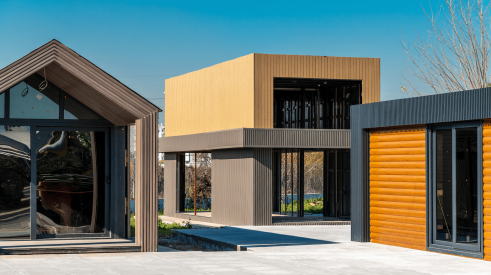Urban sprawl has been a contentious issue recently. While some see it as a necessity and the general direction in which we as a society are headed, many also criticize it for its environmental consequences and its tendency to lead to an oversupply of homes that can cause house prices to crash.
Back in 1958, William Whyte, an urban sociologist, wrote an article for Fortune magazine in which he said, “Sprawl is bad aesthetics; it is bad economics. Five acres is being made to do the work of one, and do it very poorly. This is bad for the farmers, it is bad for communities, it is bad for industry, it is bad for utilities, it is bad for the railroads, it is bad for the recreation groups, and it is bad even for the developers.” Whyte lamented the loss of “once green countryside” to smog-filled deserts and warned the countryside would soon disappear altogether. Not exactly a ringing endorsement for urban sprawl.
But surely this urban sprawl can’t be all bad, right? As it turns out, there is some good that comes along with it in the form of affordability. As The Wall Street Journal reports, cities that have expanded their area and grown outward have seen much slower home price growth than cities that have slowed their pace of expansion growth.
Cities like San Francisco, Boston, and New York, whose area growth is impeded by natural barriers such as mountains or oceans, have undergone numerous additions to building regulations making any type of construction difficult. Meanwhile, cities like Atlanta, Austin, and Charlotte have been extending their borders farther and farther from the city center.
The affordability of cities and the amount they have grown from a land area standpoint seem to be directly related. For example, the developed residential area in Atlanta grew by 208 percent from 1980 to 2010 and the real home values grew by 14 percent. The San Francisco-San Jose area saw its developed residential land grow by only 30 percent while its home values grew by 188 percent. Similarly, Raleigh, N.C. grew by 219 percent during this same period while its home values grew by 27 percent. Seattle saw its developed area grow by 69 percent and its home prices grow by 119 percent.
This trend is visible all across the country. The less a given city’s area has grown, the larger the increase it has seen in home prices and vice versa. It would seem then, that Whyte may have been mistaken back in 1958, or, at least, he wasn’t working with all the facts. But his points shouldn’t be completely lost in the wind, as many of his fears of urban sprawl still ring true today. The ideal situation, then, would be for cities to relax their building regulations and grow upward instead of outward. Unfortunately, growing outward tends to be easier and relax affordability issues more quickly.
Since regulations are not likely to be relaxed anytime soon for cities whose outward growth is naturally blocked, like San Francisco or New York, prices are likely to remain high for a long time. Bad news for people and businesses their, but good news for smaller but growing cities like Raleigh or Austin.
Advertisement
Related Stories
Construction
Proven Ways to Improve Jobsite Productivity
Consider these solutions for reducing cycle time, hard costs, dry runs, rework, miscommunication, and overall inefficiencies on the jobsite
Affordability
What Are Our Affordable Housing Options? Really
There are a range of ideas out there for addressing the housing affordability crisis. And while offering more housing choices is great, which of those are truly solutions to affordability?
Business Management
Happiness and 'The Bear'
Can happiness be the core strategy of a home building business? It can ... and it probably should be






